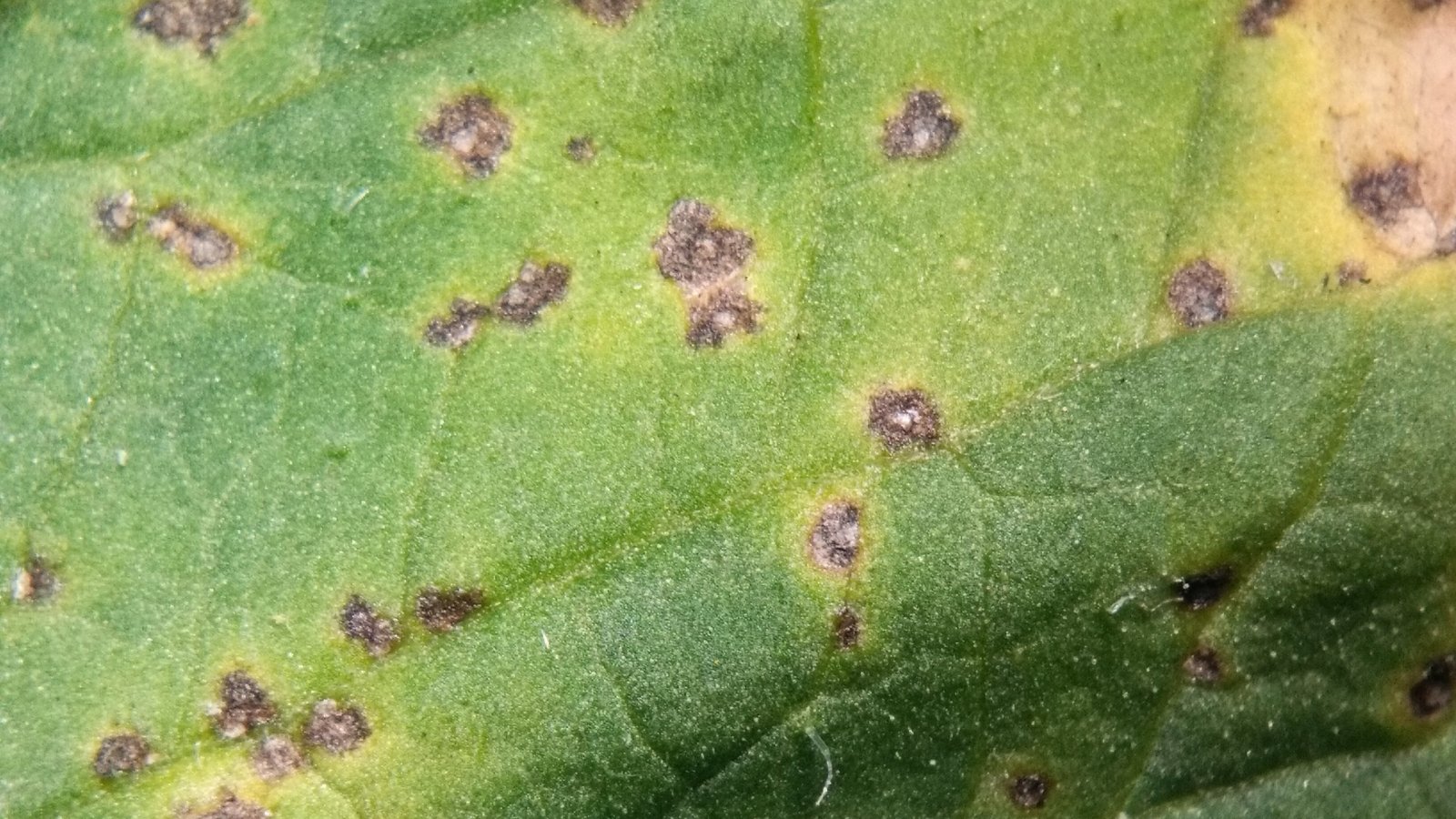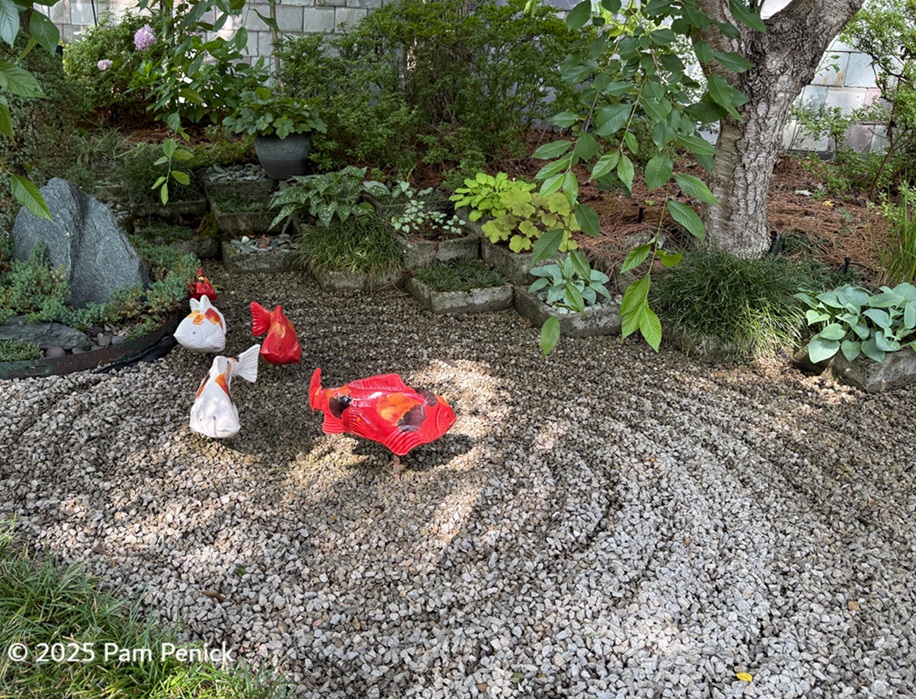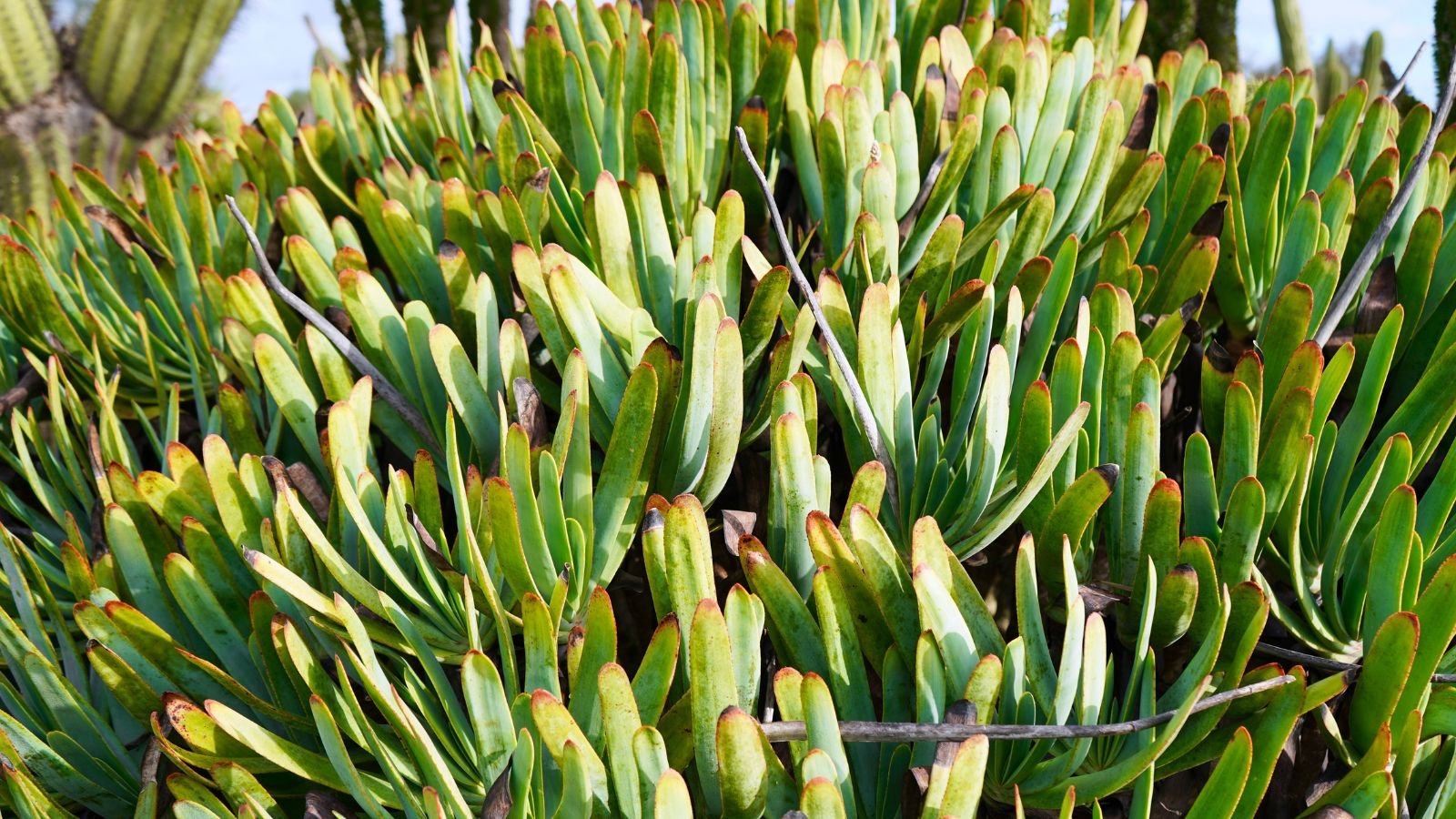PROTECT YOUR DNA WITH QUANTUM TECHNOLOGY
Orgo-Life the new way to the future Advertising by AdpathwayHopefully, we’ll only have one or two plant diseases that pop up in the home garden, even though they may recur. That’s not bad out of some possible 50,000 different problems.
While some do only minor damage, severe cases of others can be detrimental. Plant diseases adapt to and target specific hosts to survive, or can have a broad range.
Diseases not to overlook include those that not only hinder growth but can kill our garden plants, from edible crops to ornamentals to trees. These are the famine-inducing, most notorious diseases that spread to surrounding plants and have no available treatment but swift removal. We’ll explore common fungal, bacterial, and viral offenders capable of irreversible damage and how to prevent them.
Setting plants up for success with their optimal growing conditions is the best prevention. Sun exposure, soil type, drainage, moisture level, and spacing are key preferences to follow for the best health. To help stave off plant diseases:
- Grow disease-resistant species and varieties
- Interplant with companions and a diverse selection
- Increase air circulation
- Adjust watering sessions and methods
- Manage insects that are disease vectors
- Disinfect tools
- Keep any diseased debris out of the compost pile
Root and Crown Rot
 Rot occurs in waterlogged conditions.
Rot occurs in waterlogged conditions. Certain conditions are ripe for fungal plant diseases like root and crown rot, which hinder root and stem moisture and nutrient uptake. Over-saturated soils are one of the primary situations that promote the problems.
With overwatering, an inundation of rainfall, or poorly draining soils, the roots sit in soggy conditions. While some plants prefer “wet feet,” many do best in well-draining areas. And, plants can’t survive in standing water devoid of oxygen. They’re likely to succumb to root and crown rot.
Root rot and crown rot occur most in warm, humid environments, in prolonged wet conditions, and in sites with poor air circulation. With root rot, the pathogens Erwinia and Phytophthora (among others) impact feeder roots, which become unable to absorb water and nutrients. Signs of root rot include drought-stressed leaves and stems that turn yellow and wilt as they’re not receiving water from the roots.
Check for rot by inspecting stems and roots slightly below the soil line. Rotting roots will be yellow or brown rather than a healthy white. With crown rot, brown patches and rotting appear where the leafy stems emerge just above the soil line. Brown or black lesions may also crop up.
The best way to prevent rot is to limit saturated situations and avoid overhead watering when feasible. Water at the base, either by hand or with drip irrigation or soaker hoses. Ground watering delivers moisture directly to the roots without splashing foliage or the crown. With controlled volume, it limits damp situations.
Increase air circulation, especially in humid conditions. Provide proper spacing at planting, and prune away encroaching plants as the garden grows.
Before watering, do a soil moisture check to determine needs. Touch the surface and poke a finger a knuckle or two deep to determine if the soil is dry and crumbly or wet and sticky. Depending on the specific selection’s preferences, this tells us if it’s time to water or to hold off.
Remove any specimens in severe decline. In the early stages, it may be possible to recover from rot. Remove any brown areas from the crown. Dig and lift the roots to inspect and clip off any decaying portions. Try replanting them higher with good drainage.
Botrytis
 Look for brown cankers in the stems and leaves.
Look for brown cankers in the stems and leaves. Botrytis cinerea, or gray mold, is a blight that presents as light grayish-brown watery spots on petals and leaves. They discolor, and a fluffy mold appears. Stems may develop tan-brown cankers that cause them to collapse.
Botrytis thrives in high humidity, especially in the cool and damp conditions of spring and fall. It proliferates with limited air circulation.
Neem oil treats botrytis early on, as does potassium bicarbonate. A powdered formula mixed with water is useful as a regular spray treatment.
Because botrytis is an adaptable fungus, meaning it can develop resistance to continual treatments, mix up the approach with organic countermeasures. Add mycorrhizae and beneficial bacteria to the soil. Look for Trichoderma and Cladosporium to help ward off botrytis.
Use both organic foliar applications and added soil microbes to keep the spores from developing resistance.
To prevent botrytis, limit prolonged moisture and dampness. In addition to being mindful not to overwater, avoid overfertilizing. Excess nitrogen causes weak growth and increases disease susceptibility. Proper spacing and not splashing the leaves unnecessarily are good defenses.
Remove dropped debris during the growing season and in the fall to minimize harboring the spores and overwintering.
Leaf Spot
 There are several types of leaf spots to watch out for.
There are several types of leaf spots to watch out for. Bacterial or fungal leaf spot plant diseases are common infections that grow on leaf surfaces. Brown or black spots with tan centers become more significant and spread across leaves and stems over time. As the pathogens spread, affected leaves and stems blacken.
The likelihood of leaf spot increases in wet conditions, with spots appearing when leaves stay wet from prolonged moisture from rain or overhead watering.
Some of these plant diseases, like Alternaria, can spread to the roots. The roots rot on the tips and are unable to function to support the upper growth. Others, like anthracnose, affect leaves, stems, and fruits, causing lesions and impeding photosynthesis.
Cut off diseased leaves and remove any that drop to avoid overwintering for the next season. Discard the impacted parts away from the garden to prevent the spread.
Sterile tools help reduce the spread of bacteria and fungi when moving between plants. Sanitize pruners with an alcohol wipe, a dip, or spray with a 70% isopropyl alcohol solution while working.
Ample air circulation through proper spacing is the best preventative for leaf spot. Ground-level watering reduces damp conditions. Add a mulch layer to reduce soil splash during watering (and for other benefits like insulation, weed suppression, and moisture retention). Prune surrounding plants to increase air circulation.
If you have a problem with leaf spot, grow the selection in a different location the following season. Crop rotation for a year or two can help reduce populations that overwinter in the soil.
Aster Yellows
 This disease is common on certain flowering plants.
This disease is common on certain flowering plants. Aster yellows is a plant disease that spreads via leafhoppers. The sap-sucking pests spread the phytoplasma (similar to a bacterium) as they feed on infected hosts and travel between specimens.
The phytoplasma causes weak, distorted leaves and shoots, overall yellowing, and malformed, greenish flowers where tissues form instead of blooms.
Unfortunately, aster yellows doesn’t have a working treatment in the home garden. Scout for any signs early and remove infected plants to minimize the impact on nearby vegetation.
Treat severe leafhopper infestations to avoid the introduction of the phytoplasma. Remove fallen leaves and debris to prevent the spread, and disinfect tools. Provide the best cultural practices of consistent watering, appropriate spacing, and nutrient-rich soils with good drainage to boost vigor and resistance to insect and disease damage.
Reduce nearby hosts by keeping beds and surrounding areas weed-free.
Wilt
 Sudden wilting is a cause for concern.
Sudden wilting is a cause for concern. Fusarium and Verticillium wilt are fungal plant diseases that cause sudden wilting, blackened leaves and stems, and decline. They spread from spores in the soil and also arrive on infected seeds or transplants. Wind, water, and tools also spread the spores.
The fungus impacts the roots and affects nutrient and water uptake. With fungal wilts, you may see one half of the plant wilting more than the other, followed by leaves yellowing from the bottom of the stem on up. When cut, the stems may show brown tissues.
Unfortunately, there’s no treatment for these wilts. To prevent them from spreading, remove and dispose of the impacted plants.
Start with plant location to ward off wilt. Provide the best sun exposure, soil type, drainage, and plenty of airflow for healthy, resistant specimens.
Minimize root stress by situating new additions in loose soils with room to grow. Add a layer of mulch, keeping it away from stems to prevent rot. If you’ve experienced wilt in the garden, check the soil pH, too, and do a soil test.
Rust
 Rust is easy to identify by its coloring.
Rust is easy to identify by its coloring. The fungal disease rust is most prevalent in hot and humid climates. It can cause leaves to yellow, wilt, and drop early.
With these plant diseases, you’ll find powdery spores on the undersides of yellowing leaves. The spores erupt with yellow mold caused by the highly specialized pathogens like Aecidium and Puccinia, and some 7,000 more.
Cut off the infected leaves and other parts if you see rust. Rust spreads readily, so bag up and discard the infected material.
Horticultural oils like neem and preventative fungicides can treat the issue early on. Removal is the best option for any severely impacted vegetation in decline.
As with leaf spot, the best way to prevent rust is to increase air circulation between plants, especially in humid conditions. Watering at the base of the plant avoids impacting foliage. If using overhead irrigation, watering early in the day can help by giving ample dry time in the day’s sun and breeze.
Mosaic Virus
 This virus leaves mosaic patterns on leaves.
This virus leaves mosaic patterns on leaves. Mosaic viruses reflect a number of plant diseases that disrupt normal cellular function. The virus invades a cell, which replicates the virus instead of carrying out plant processes. Leaves get a mottled mosaic pattern in light and dark greens and may curl and distort.
Common mosaic viruses include tobacco mosaic virus, cucumber mosaic virus, tomato mosaic virus, and rose mosaic virus.
Mosaic viruses spread easily. They enter tissue through insect or pruning damage, on tools, and via splashing water.
Like wilt, mosaic viruses do not have a treatment. The best action is to spot them early and remove infected crops.
To prevent mosaic virus, remove any fallen leaves and debris to limit the spread. Practice crop rotation among common hosts like nightshades (tomatoes, peppers, eggplants, potatoes, flowering tobacco, petunia).
Control severe pest outbreaks of piercing insects like aphids and thrips. These can spread viruses as they feed. As usual, practice good tool sanitization.
Rose Rosette
 This virus is specific to plants in the Rosa genus.
This virus is specific to plants in the Rosa genus.Rose rosette is a Rosa-specific virus that’s highly contagious and results in a rose dying. Also called witches’ broom, it causes growth malformations and thick, thorny canes. Foliage can stunt and deform, and buds distort.
The plant disease is spread by a mite that feeds on infected host plants (often multiflora roses) and travels via wind and infected tools.
There is no treatment for rose rosette but to remove the infected roses to keep the virus from spreading and lingering in the soil.
Grow disease-resistant varieties for a strong foundation against rose problems. Avoid planting multiflora roses and Knock Outs if rose rosette is a problem in your area.
Prune and remove any lingering buds and flower material in late winter or early spring. Mites overwinter in the buds and plant debris. Keep beds debris-free throughout the growing season and in winter.
Fire Blight
 This severe plant disease is common in fruit trees.
This severe plant disease is common in fruit trees. Fire blight is severe among fruit trees like pears and apples, as well as ornamentals like quince. The bacteria Erwinia amylovora overwinter in small cankers in the branches and trunks and enter healthy tissues from the point of infection.
During blooming and in early summer, you may see withered flowers, buds, and blackening leaves and stems that appear scorched and wilted. Branches produce less fruit, and eventually, the entire tree may succumb.
If you suspect blight but aren’t sure, cut into the impacted stem to inspect the tissue. With blight, it will be dark and moist. If other issues are the cause of the stress, the tissue will be greenish or dry brown.
Fungicides or chemical controls aren’t effective at treating fire blight in the home garden. If you spot blight, cut off the impacted growth 8 inches below the last visible signs. Disinfect pruning tools with alcohol or a bleach and water solution between each cut.
Burn or bag the diseased parts, as the pathogens spread easily.
Starting with blight-resistant varieties, especially when growing fruit trees in humid environments, is an advantageous first step.
Following best cultural practices, like ensuring plenty of air circulation, full sun exposure, and avoiding overfertilizing, creates the healthiest specimens.
Sharp, clean tools when pruning help prevent injury and entry points. Pathogens enter tissues through small wounds and travel via wind, tools, water, soil, and insects. Skip pruning in wet conditions.


 2 days ago
25
2 days ago
25





















 English (US) ·
English (US) ·  French (CA) ·
French (CA) ·